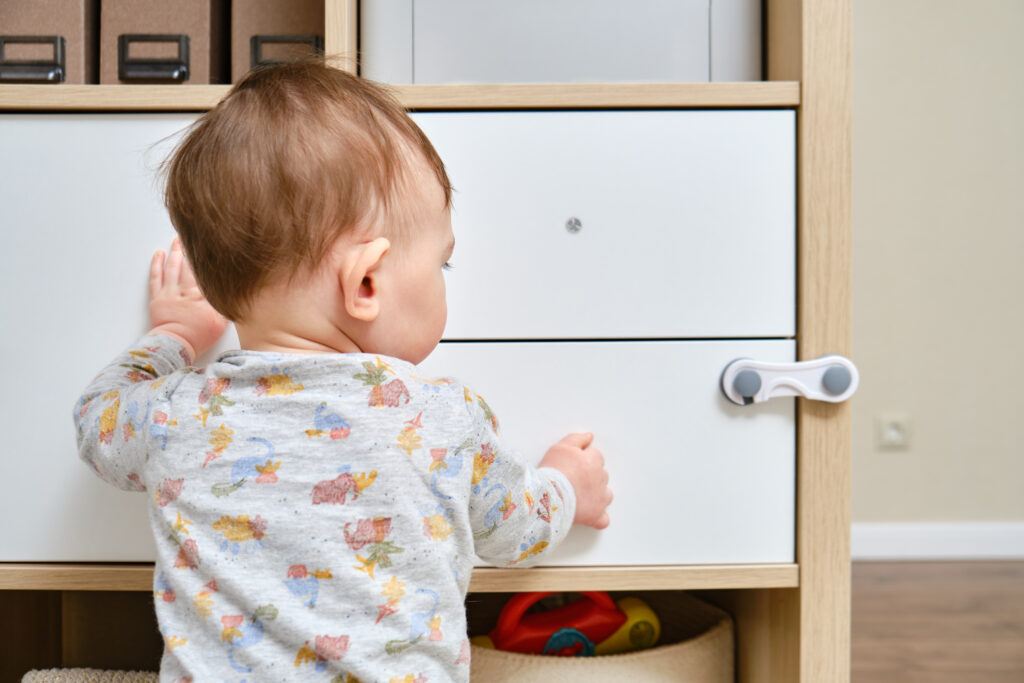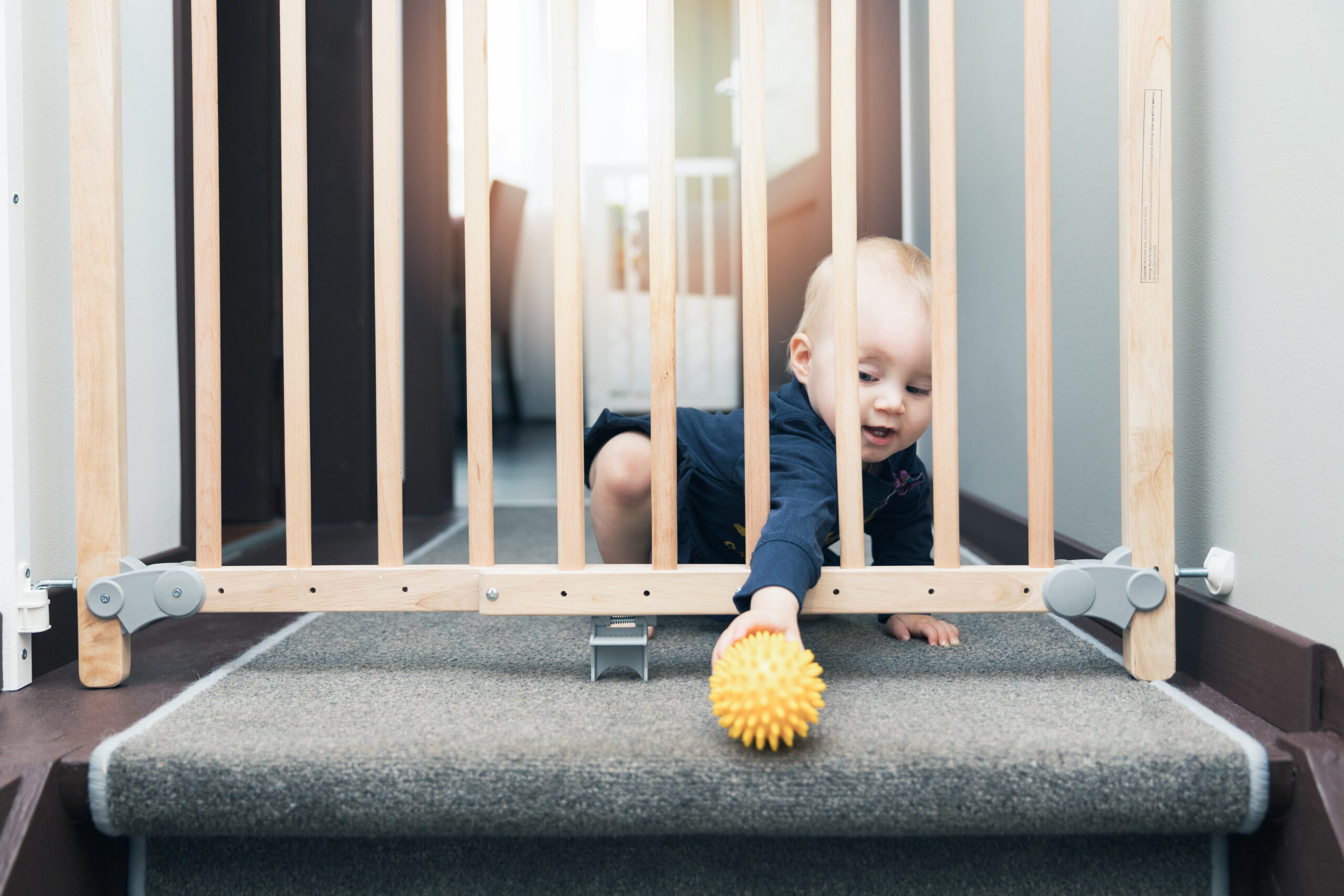In the beautiful chaos of parenthood, ensuring your child’s safety is paramount. From the moment they start crawling, every corner of your home becomes an adventure waiting to happen. Childproofing your living space isn’t just about placing soft cushions or keeping an eye out – it’s about anticipating potential hazards and taking proactive measures. Here, we’ll explore essential childproofing tips to transform your home into a safe haven for your little explorers.
Start with a room-by-room assessment.
Start childproofing by assessing every room in your home. Find hazards such as sharp corners and electrical outlets. Also, look for small objects that can be choking hazards and furniture that can fall over. This meticulous approach ensures that no area is overlooked.
Lock cabinets and drawers.

Cabinets or drawers that contain cleaning products and sharp or small objects are also potential hazards. Install childproof locks or latches to prevent little ones from accessing these items. This simple step can prevent accidents and ingestions. Using these locks on all cabinets and drawers can help avoid these accidents. They prevent children from accessing objects that, while not obviously dangerous, could still harm them.
Cushion sharp edges and corners.
Sharp edges and corners on furniture pose injury risks, especially for children learning to walk or crawl. Use corner guards or edge bumpers to cushion these areas, reducing the severity of potential bumps and falls. Not only are corner guards “child proof” but they can also prevent a clumsy parent from getting bruised up.
Install safety gates.

Safety gates are invaluable tools for restricting access to hazardous areas such as staircases and kitchens. Choose sturdy gates that are easy for adults to operate but impassable for children. Remember to install gates at both the top and bottom of staircases.
Secure window treatments.
Window treatments with cords pose strangulation risks for young children. Replace corded blinds and curtains with cordless alternatives or use safety devices to secure cords out of reach. Additionally, ensure that furniture is kept away from windows to prevent climbing accidents.
Check for poisonous plants.
Indoor and outdoor plants can be poisonous if ingested by children or pets. Familiarize yourself with common toxic plants and either remove them from your home or place them out of reach. Be especially cautious with plants like lilies, philodendrons, and poinsettias
Secure heavy objects.
Heavy objects such as televisions, mirrors, and artwork can become dangerous projectiles if not properly secured. Mount heavy items securely to walls using appropriate hardware to prevent them from tipping over onto curious children.
Keep small objects out of reach.
Small objects are choking hazards for young children, who often explore the world by putting things in their mouths. Keep small items like coins, buttons, batteries, and toys with small parts out of reach, or opt for larger, child-safe alternatives.
Educate yourself on CPR and first aid.
Despite your best efforts, accidents can still happen. Equip yourself with knowledge of CPR and basic first aid techniques to respond quickly and effectively in emergencies. Consider taking a certified CPR course to gain confidence in your abilities.
Cover electrical outlets.

Electrical outlets are fascinating for little fingers but can be extremely dangerous. Invest in outlet covers or plug protectors to prevent accidental shocks or electrocution. These little gadgets are very inexpensive and can be found at hardware stores, Walmart, and on Amazon. As small and inexpensive as they are, they go a long way in keeping your little one safe. Be vigilant in rooms with multiple outlets, like the living room or nursery.
Keeping your little ones safe: our commitment to childproofing.
Keeping your home safe for your little one is an ongoing process that evolves as your child grows and develops. Stay vigilant and regularly reassess your childproofing measures to ensure they remain effective. As you’re reading through these childproofing tips, remember that a little preparation goes a long way in keeping your little ones safe and sound.
At Childcare Network, all of our rooms and common areas are carefully designed and furnished to create a safe environment for children of all ages. You can rest assured that our rigorous health and safety protocols help to create the ideal environment for your young one to learn, grow, and play safely.
Childproof what you can at home and know that Childcare Network has the rest handled.



